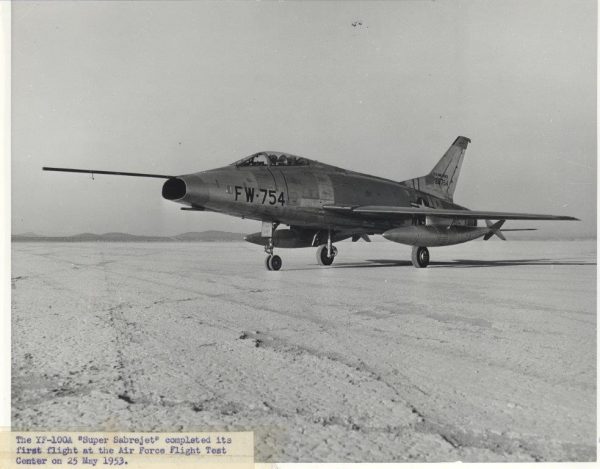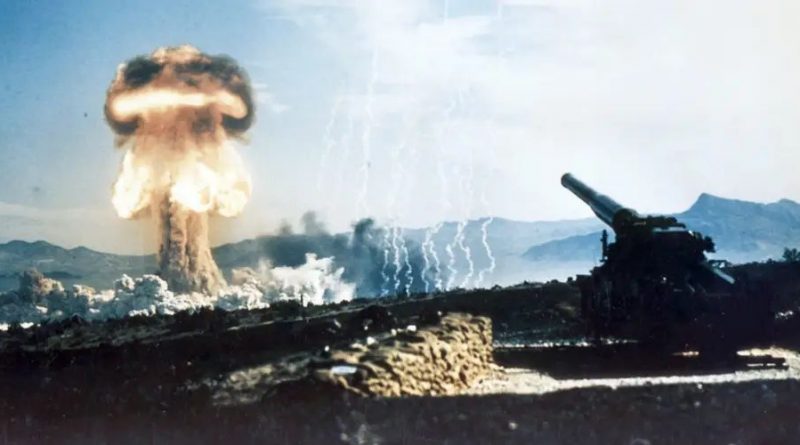May 25 in U.S. military history
1942: Having broken the Japanese naval code, the Navy secretly prepares for the expected Japanese invasion of Midway. Two companies of Marine Raiders land on the island to reinforce the garrison and submarines take up their patrol positions.
1945: As the Joint Chiefs of Staff meet in Washington and approve plans for the invasion of Japan (set for November 1), 464 B-29 “Superfortress” heavy bombers target Tokyo, burning 16 square miles of the city.
1953: Test pilot George “Wheaties” Welch pushes the North American YF-100A to Mach 1.03 on the maiden flight of the Super Sabre. This warplane is the first Air Force fighter capable of reaching supersonic speeds at level flight. Welch accumulated 16 aerial victories during World War II, and was one of the only pilots able to get airborne and engage Japanese aircraft during the attack on Pearl Harbor. He was recommended for the Medal of Honor for his actions on December 7th, but having taken off without orders, he only receives the Distinguished Flying Cross. While serving as an instructor and test pilot for North American during the Korean War, he reportedly shot down several MiG-15 aircraft, but again, did so against orders so he did not receive credit for the kills. Welch will perish in a crash while performing tests on the F-100 in 1954.

That same day, the specially built 11-inch gun nicknamed “Atomic Annie” fires a nuclear warhead 10,000 yards downrange as 3,200 soldiers and civilians are on hand to witness the United States’ only nuclear artillery test. The projectile is similar in design and yield (15 kilotons) to the “Little Boy” dropped on Hiroshima.
1961: Less than a month after the first American blasts off into space, President John F. Kennedy declares his intention to put a man on the moon in less than ten years and asks Congress to make the space program a high priority. Although Kennedy does not live to see it, his dream comes true when Apollo 11 lifts off from the space center named in his honor on July 16, 1969.
1973: Capt. Charles Conrad, Jr., Cmdr. Paul J. Weitz and Cmdr. Joseph P. Kerwin blast off aboard a Saturn IB rocket. The all-Navy crew are the first to visit the Skylab space station, already in orbit. The astronauts spend a record 28 days in space, making repairs and conducting science experiments until their successful recovery by USS Ticonderoga (CV-14) near San Diego.
